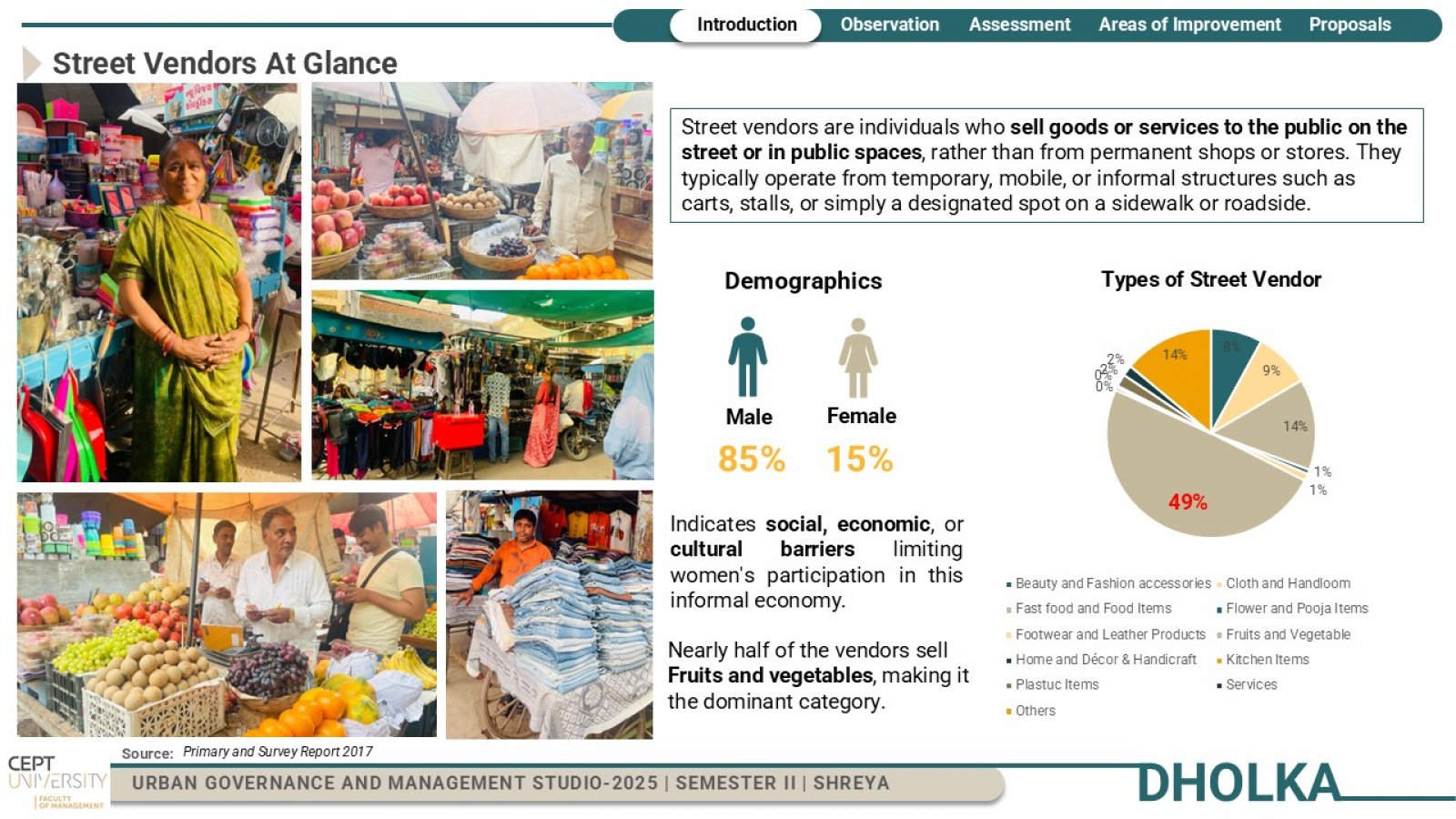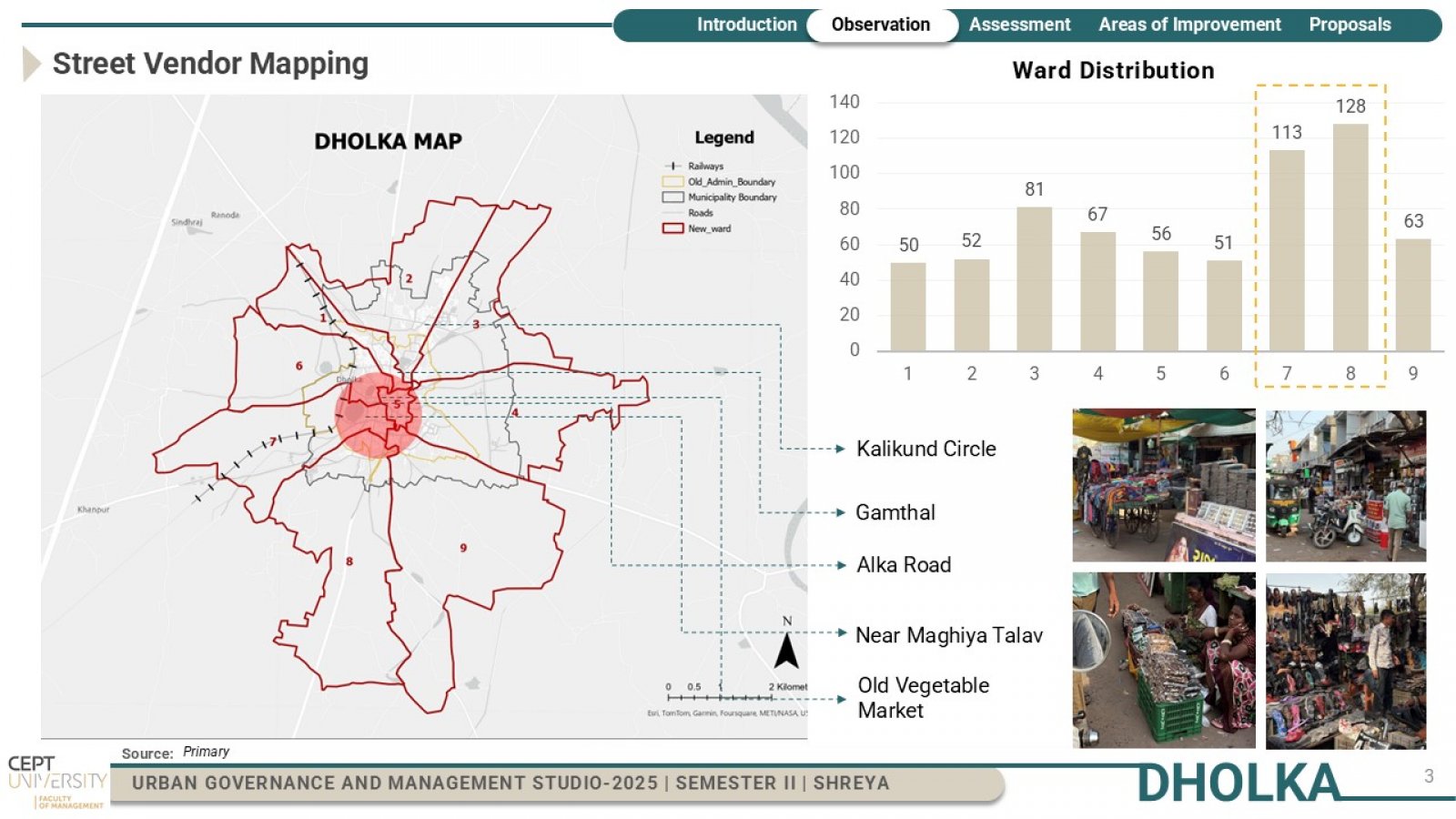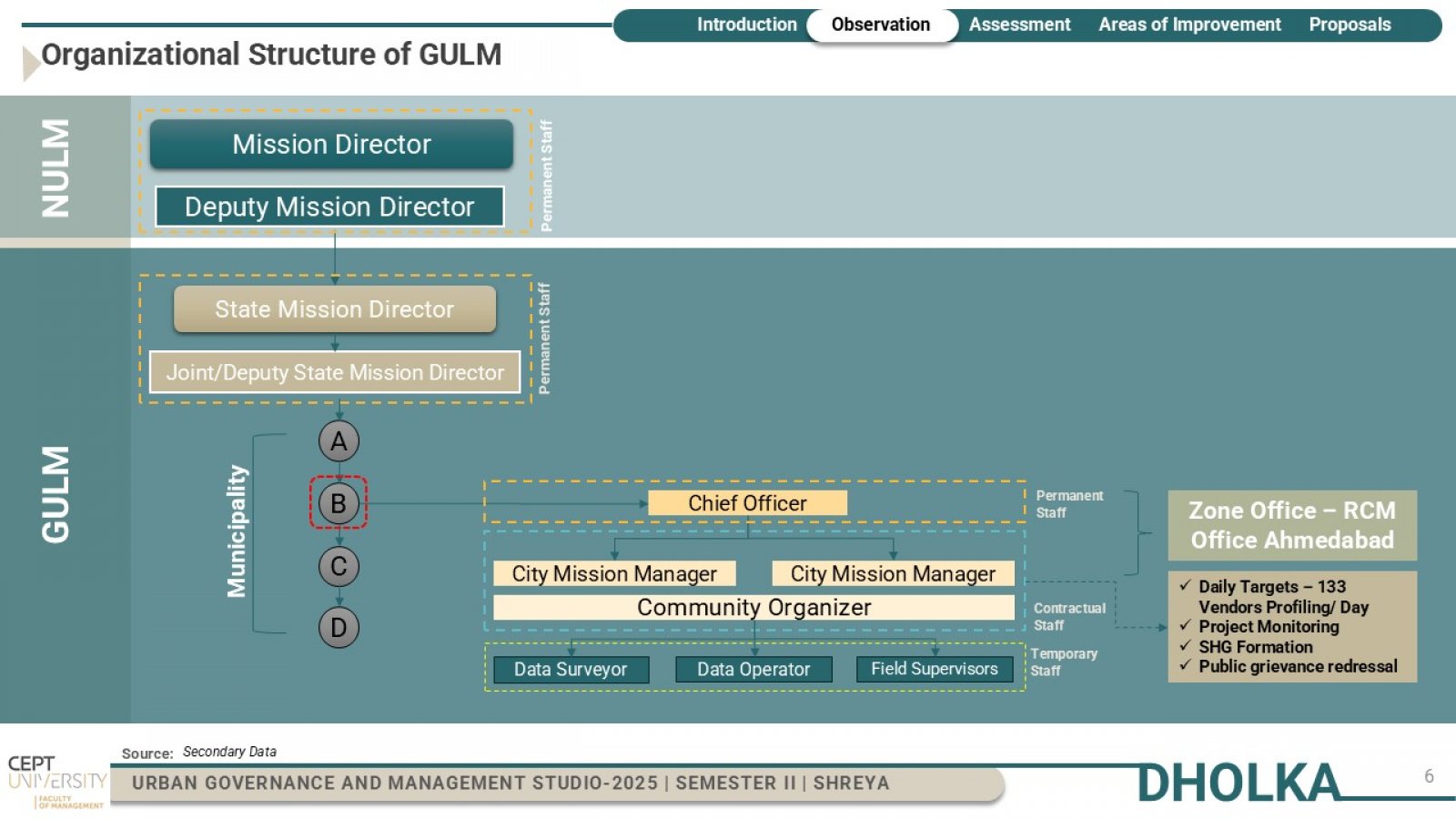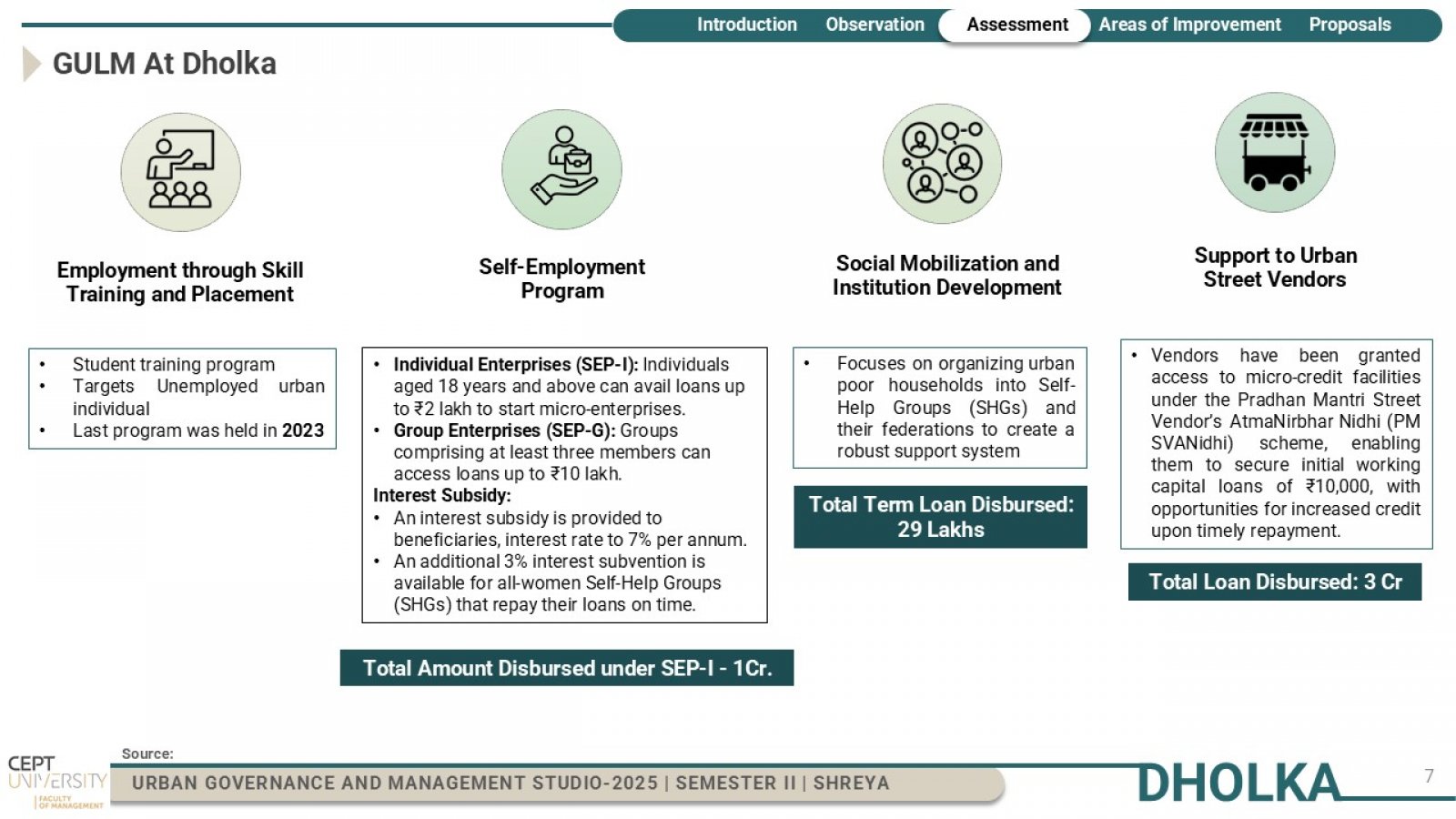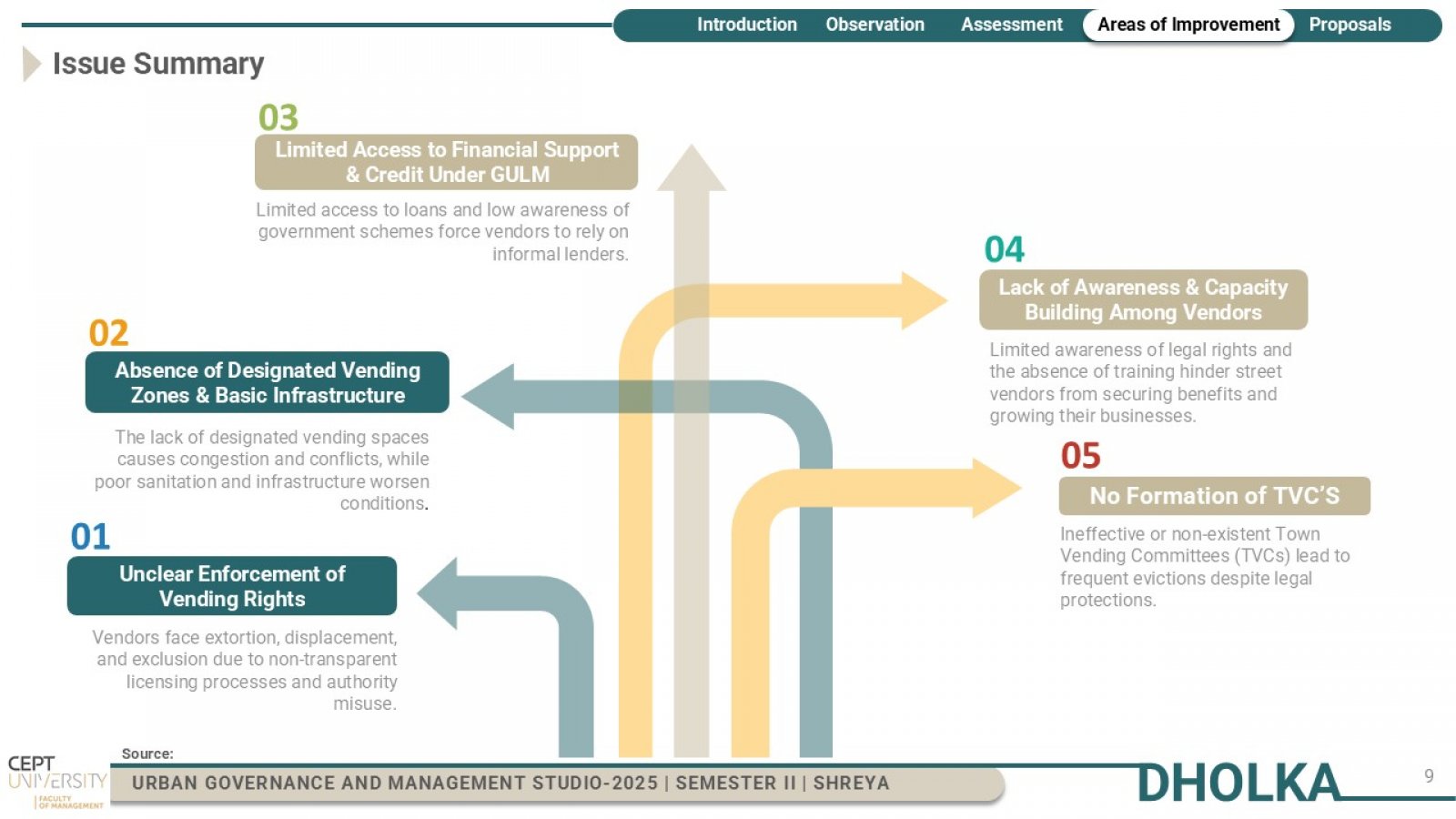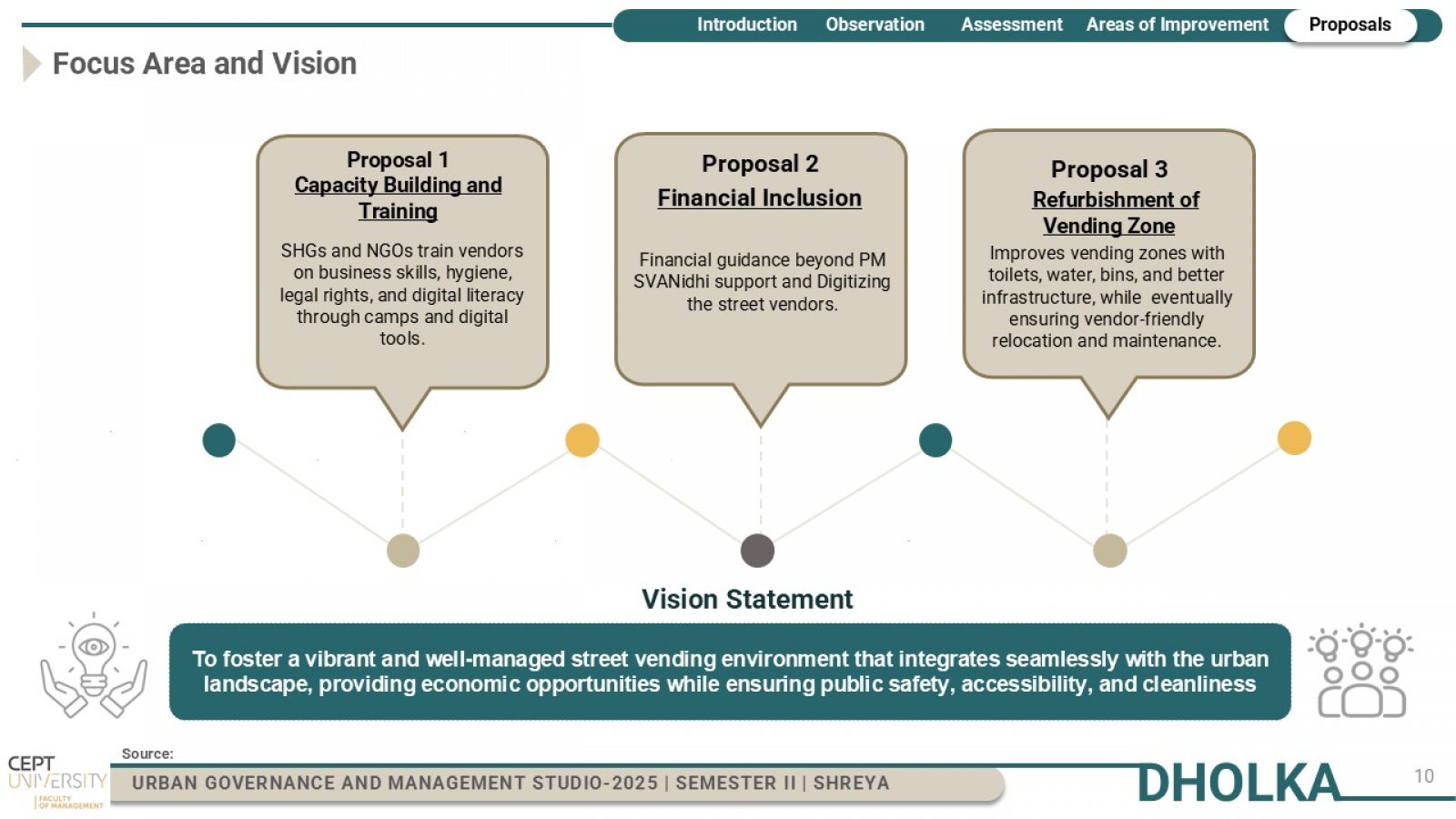Your browser is out-of-date!
For a richer surfing experience on our website, please update your browser. Update my browser now!
For a richer surfing experience on our website, please update your browser. Update my browser now!
The project follows a structured, phased, and participatory methodology to strengthen the street vendor ecosystem in Dholka. It begins with a baseline assessment through field surveys, vendor interactions, and data collection from the Nagar Palika to identify existing gaps and needs. The first phase focuses on capacity building, including training in digital literacy, legal rights, financial management, and business skills. This is followed by financial inclusion, ensuring vendors gain access to credit through schemes like PMSVANidhi, along with linkages to insurance and savings services. Once vendors are better informed and financially empowered, the project moves to the formation of the Town Vending Committee (TVC) to institutionalize governance and ensure representation. In parallel, refurbishment of vending zones is undertaken—improving infrastructure such as water supply, sanitation, lighting, and waste management. Stakeholder convergence with Nagar Palika, SHGs, NGOs, and CSCs is ensured throughout, along with regular monitoring and feedback to guide adaptive implementation.

